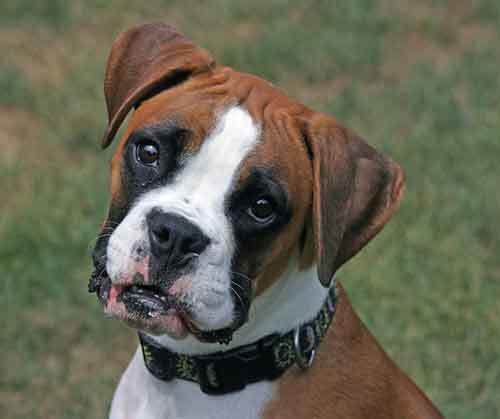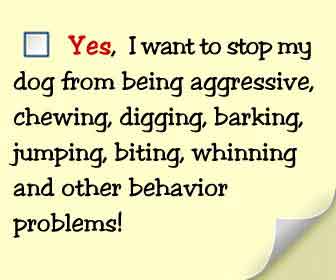If you choose a Boxer puppy as a new family addition, then expect to have a wonderful companion in your homestead.
Nonetheless, you need to train this curious, playful and extremely energetic pet on matters to do with being obedient to you and having the proper behavior to ensure you experience this wonderful companionship.
But then, the big question is, what is the best way to train a boxer puppy to achieve the said results?
This article aims to elaborate this, and much more, as far as your Boxer puppy is concerned.
Table of Contents
First and foremost, let’s briefly see a few facts about boxer dogs to help you better understand the breed:
✓ The Boxer dog is a short-haired, medium-sized breed with a square and short muzzle. Having Originated from Germany during the 1800s, this breed is closely related to the Bulldog.
✓ Boxers are not considered to be fully grown till they’re three years old.
✓ The typical Boxer is alert, intelligent and fearless, but friendly. He’s usually loyal to his family.
✓ Boxers are cheerful and will often greet you ecstatically. They are also affectionate towards older adults and children.
Further Reading: How To Entertain Your Dog When You’re Not At Home
✓ Early and consistent training is crucial before they become too big to handle.
✓ Although they’re large, they are not “outdoor dogs” but are to be kept as house dogs. The outside hot condition is not conducive for them.
✓ Boxers mature slowly while acting like unruly puppies for some years.
✓ Boxers like and need to be around the family — left alone for a long time they’re capable of becoming ill-tempered/destructive.
✓ Boxers drool a lot and snore loudly.
✓ Being intelligent, they usually respond well to strict but fun training. They also don’t like being bossed around or given harsh treatment.
To be more successful in their training, try to make it as fun as possible and ensure there’s a trainer to train them all day in the initial stages.
Further Reading: 10 Must Have Kitchen Items For Dog-Owning Bakers
✓ To get a boxer that is healthy, avoid buying a puppy from irresponsible breeders, pet store or puppy mill whose puppies lack sound temperament and are generally not in good condition.
For more tips on how to find a reputable breeder and the best puppy possible, check this post.
Further Reading: A Guide To Some Of Best Dog Training Books Available Today (Top 24)

Where Can I Buy a Boxer Puppy?
to buy them, you can search from online sources to get the breed and type of the puppy you like as well as the boxer puppy cost which slightly varies from one breeder to another.
Two of the helpful sites you can visit are:
http://www.puppyfind.com/boxer.php and http://marketplace.akc.org/puppies/boxer etc.
Further Reading: Choosing The Best Dog Water Dispenser To Keep Your Dogs Hydrated
[thrive_leads id=’7777′]Some tips and tricks on training a boxer puppy:
Firstly, it’s worthwhile to note that boxer puppies need an established household structure, consistent commands and rules so that they’ll not be ill-behaved.
To facilitate this they need constant praises and rewards in order to encourage them develop good habits.
A major element of their training is house-training which needs to be done the soonest possible.
One of the most recommended ways to do this is by using a comfortable crate with the aim of making the puppy consider the crate as his den- a safe place to relax and sleep as well as avoid uncomfortable external circumstances.
Further Reading: How To Choose The Best Automatic Dog Feeder
How to Crate Train a Boxer Puppy?
Having acquired a sizable (large) crate or wire cage for the puppy, you can begin crate-training him.
1- Firstly, make the crate appealing possibly with some comfy dog bed then scatter few treats inside it. You can give your puppy some meals inside it as well but leave its door open.
2- The moment the puppy enjoys going to the crate, lock the door for few seconds, and afterwards open it again.
3- If the puppy is quiet, give him lots of praise. But if the puppy whines and cries in the initial stages when left inside the crate, leave it there and it will eventually stop crying but this needs your patience.
4- Ideally, you can start the crate training while you’re with your puppy in the same room, allowing it to see you. Later, leave the room (or simply stay out of its sight) and again practice this till you can do it without any tantrums from your puppy.
5- In little time it’ll be possible to leave the dog in the crate while you’re away and he’ll freely head to the crate whenever necessary.
Further Reading: A Guide to Finding The Best Doormats For Dogs
NB : Put in mind these crate-time guidelines and avoid locking your puppy in its crate for over 5 hours at a time (except overnight):
[thrive_text_block color=”note” headline=””]Age 9-10 weeks; 30 to 60 minutesAge 11-14 weeks; 1 to 3 hours
Age 15-16 weeks; 3 to 4 hours.
Age 17 plus weeks; 4 hours or more (but less than 6) [/thrive_text_block]
How to Potty Train a Boxer Puppy?
1- Get up early during the initial few days to let the puppy out so that he relieves himself.
2- The moment you open the crate, be ready with a leash, clicker as well as a treat, to take the puppy outside without waiting for too long.
3- And to avoid giving the puppy time to locate a different place to relieve himself, use a cue word or “mark” from the start to ensure the dog knows exactly what to do and where to head to relieve himself whenever he gets outside.
You can use a word or key phrase consistently along with the selected Clicker system, like “Go potty” etc.
4- If you find the Boxer circling/sniffing the floor, immediately take him to his “potty place”.
5- If, at any point you find him having began to relieve himself in the crate (which’s possible), just pick him up, and say “NO!” with a firm voice and bring him outside.
6- Whenever he goes to potty outside, praise him and reward him so that he would know he has done something right.
Usually, he’ll repeat the behavior so as to be offered more treats and ultimately develop a good habit.
[thrive_text_block color=”blue” headline=””]This “praise and reward” mechanism can efficiently be used to develop other appropriate habits whenever the puppy does what is desirable and in the right place instead of a smack or treating it harshly for this will hardly achieve the desired outcome. [/thrive_text_block]Often, the tone of your voice can achieve more than what your hand can.
Further Reading: The Top Ten Best Chew Toys For Destructive Dogs
Training Your Boxer Puppy to Follow other Simple Commands:
In the initial few weeks, the puppy needs to be trained to follow your commands accordingly. These include:
✓ Using a word like “SIT” when you want it to “sit”. This you can do when the puppy is in the actual process of sitting to reinforce the formal training, followed by an immediate “GOOD BOY” that will even strengthen it further.
[thrive_text_block color=”note” headline=””]Always praise the puppy after any action for this will help it connect with the action effectively. [/thrive_text_block]✓ Other common words you can train it in a similar manner include; “COME”, “WAIT”, “TAKE IT”, “GO ON” etc.
For more information on how to train him including lead training and more, you may try the doggy dan the online dog trainer video course.
Other helpful links:
✓ To know how to stop your boxer puppy biting if doing so, visit http://boxercare.com/stop-puppy-biting/
✓ To find out how to train a boxer dog not to jump, read this post
✓ To know the best food for boxer puppies, visit this page
Further Reading: Choosing The Best Multivitamin For Dogs
Conclusion:
Although stubborn as the Boxer puppies are, you can have a companion with whom to enjoy the years to come, but this calls for your patience, love and consistence.
And if necessary, you may also seek the services of a dog trainer who is well versed with dogs and can effectively help achieve the desired results in your puppy and even more.






